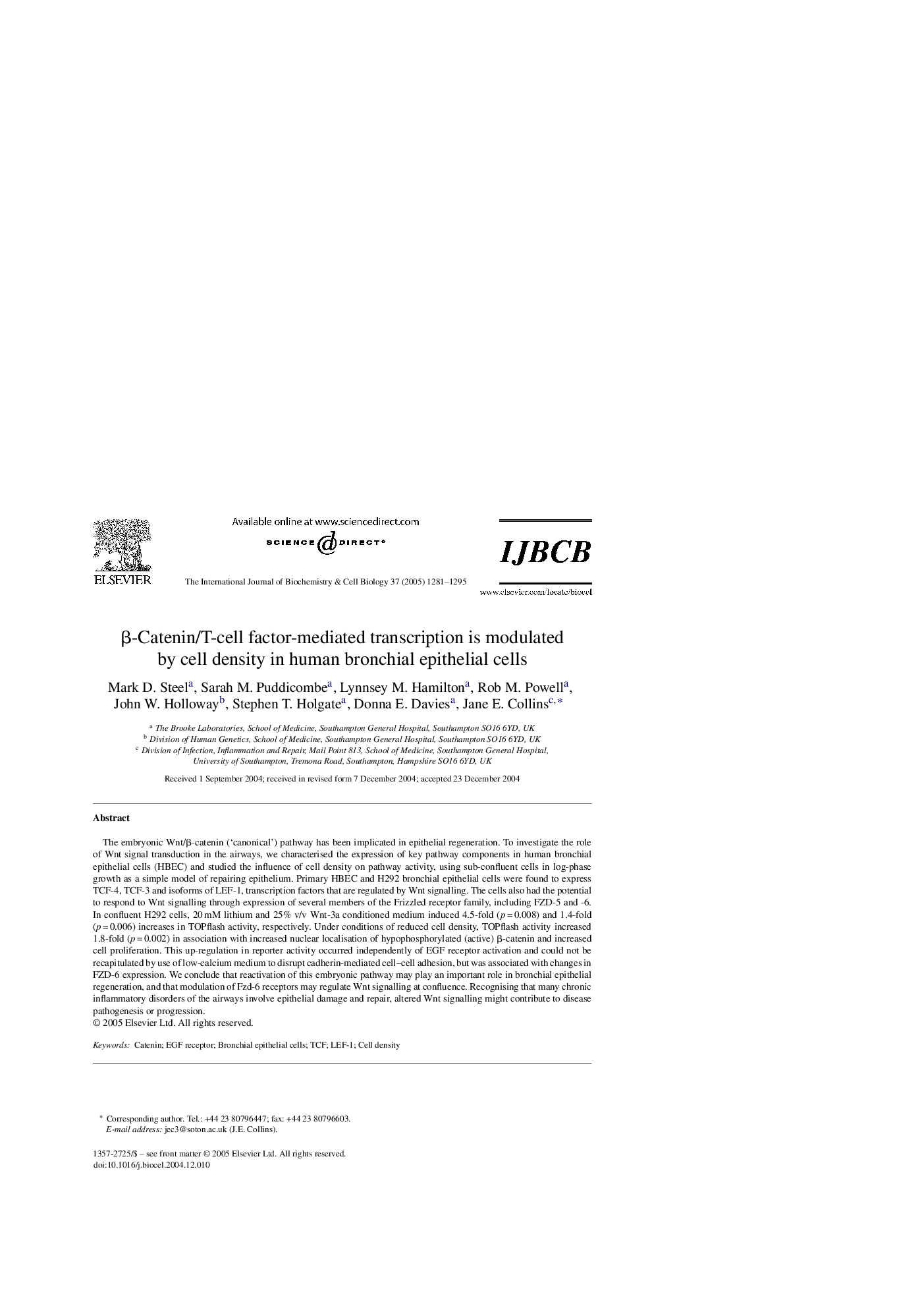| Article ID | Journal | Published Year | Pages | File Type |
|---|---|---|---|---|
| 9890018 | The International Journal of Biochemistry & Cell Biology | 2005 | 15 Pages |
Abstract
The embryonic Wnt/β-catenin ('canonical') pathway has been implicated in epithelial regeneration. To investigate the role of Wnt signal transduction in the airways, we characterised the expression of key pathway components in human bronchial epithelial cells (HBEC) and studied the influence of cell density on pathway activity, using sub-confluent cells in log-phase growth as a simple model of repairing epithelium. Primary HBEC and H292 bronchial epithelial cells were found to express TCF-4, TCF-3 and isoforms of LEF-1, transcription factors that are regulated by Wnt signalling. The cells also had the potential to respond to Wnt signalling through expression of several members of the Frizzled receptor family, including FZD-5 and -6. In confluent H292 cells, 20 mM lithium and 25% v/v Wnt-3a conditioned medium induced 4.5-fold (p = 0.008) and 1.4-fold (p = 0.006) increases in TOPflash activity, respectively. Under conditions of reduced cell density, TOPflash activity increased 1.8-fold (p = 0.002) in association with increased nuclear localisation of hypophosphorylated (active) β-catenin and increased cell proliferation. This up-regulation in reporter activity occurred independently of EGF receptor activation and could not be recapitulated by use of low-calcium medium to disrupt cadherin-mediated cell-cell adhesion, but was associated with changes in FZD-6 expression. We conclude that reactivation of this embryonic pathway may play an important role in bronchial epithelial regeneration, and that modulation of Fzd-6 receptors may regulate Wnt signalling at confluence. Recognising that many chronic inflammatory disorders of the airways involve epithelial damage and repair, altered Wnt signalling might contribute to disease pathogenesis or progression.
Related Topics
Life Sciences
Biochemistry, Genetics and Molecular Biology
Biochemistry
Authors
Mark D. Steel, Sarah M. Puddicombe, Lynnsey M. Hamilton, Rob M. Powell, John W. Holloway, Stephen T. Holgate, Donna E. Davies, Jane E. Collins,
